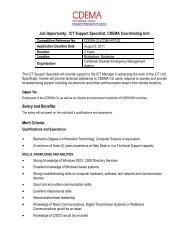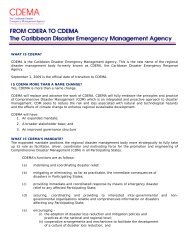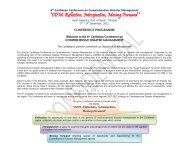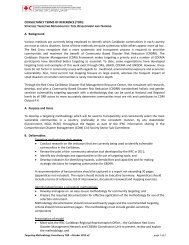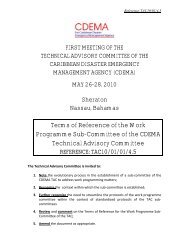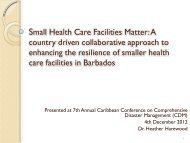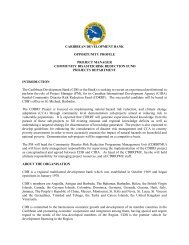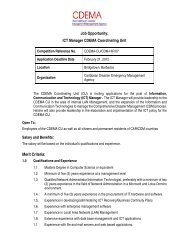Create successful ePaper yourself
Turn your PDF publications into a flip-book with our unique Google optimized e-Paper software.
c) Inclusion of illustrations of tools:<br />
The use of illustrations (diagrams and photos) of tools described in training material provides an<br />
additional visual support for facilitators. This is particularly useful for facilitators who may not<br />
have used a particular tool before.<br />
d) Use of case studies<br />
Descriptive, narrative case studies allow for real-life illustration of issues or concepts (see<br />
material from IUCN et al. and the International Federation of Red Cross and Red Crescent<br />
Societies, for example).<br />
e) Sequential “how to guides”<br />
Step by step guides help facilitators and participants work through processes sequentially and<br />
when accompanied by illustrations, help users to “see” how a process might unfold (see, for<br />
example, material from Bread for All and the International Federation of Red Cross and Red<br />
Crescent Societies).<br />
f) Engaging participants’ creativity<br />
Many of CANARI’s workshops have successfully built on the exceptional creativity that many<br />
Caribbean people possess by encouraging them to use painting or drawing, craft, singing,<br />
poetry, dramatisation, mapping and other forms of expression to present their ideas and<br />
findings. This works particularly well for strategic visioning (i.e. what would a resilient<br />
community look like); designing communications to influence other community members;<br />
institutional mapping; and strategic monitoring and evaluation (e.g. ‘body mapping’ of success).<br />
The final version of the Programme framework will also include seek to address any gaps in<br />
best practices identified during the course of the consultancy.<br />
4. ABOUT THIS DOCUMENT<br />
This document outlines a Programme to enable communities to increase their resilience to<br />
climate change hazards. It provides guidance, tools and resources for National Disaster Offices<br />
(NDOs), community animators and facilitators, community leaders and community-based<br />
organisations to work with community members and other stakeholders to employ an integrated<br />
approach to reducing community risks.<br />
The Programme has been designed for communities in <strong>CDEMA</strong>’s 18 participating states but<br />
may be applied wherever there are communities vulnerable to climate change.<br />
Outline of this document and scope of hazards considered. These hazards (climate extremes)<br />
include increased frequency of heat waves, increased flood events, increased incidences of<br />
drought, increased hurricane intensity, sea level rise.<br />
5. OVERVIEW OF THE PROGRAMME<br />
Schematic of Programme<br />
6. COMPONENTS OF THE MODEL COMMUNITY-BASED CLIMATE CHANGE AND<br />
DISASTER RISK REDUCTION PROGRAMME<br />
6.1 Programme approaches<br />
The MCCCDRR Programme will incorporate:<br />
53



